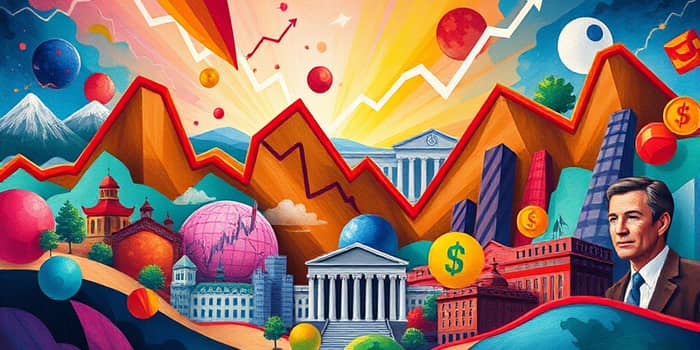
Interest rate cycles are fundamental to understanding how central banks steer economies through varying conditions. This article dives deep into the anatomy of these cycles, tracing their historical beats and exploring their modern-day impacts on markets and investors. By unpacking definitions, stages, mechanisms, and strategic takeaways, readers will gain natural fluctuation of interest rates insights to navigate volatile environments.
An Interest Rate Cycle refers to the pattern of changes in policy rates implemented by a central bank in response to evolving economic indicators. These cycles alternate between periods of tightening (rate hikes) and easing (rate cuts), reflecting shifts in growth, inflation, employment, and consumer demand.
At its core, monetary authorities use rate adjustments as their primary lever for monetary policy, aiming to maintain price stability and sustainable expansion. Through tools like the federal funds rate, discount window lending, and forward guidance, central banks transmit policy intentions into banking, credit, and investment decisions.
The four classic stages of the cycle mirror the broader business cycle and guide market expectations.
One complete cycle can span several years, with transitions influenced by GDP trends, employment metrics, and price pressures. Markets often react ahead of official moves, prompting yield curve inversions or steepenings before central banks act.
In the United States, the Federal Reserve’s policy rate journey from 1994 to 2025 highlights dramatic shifts. For example, rate cuts followed the 2001 recession and 9/11 attacks, while aggressive hikes in 2005–2006 aimed to curb housing excesses. The 2008 financial crisis drove policy rates to near zero until 2015.
In 2022, facing sharply rising inflation, the Fed embarked on a rapid tightening cycle, pushing the federal funds rate into the 4.25%–4.50% range. By mid-2025, inflation had moderated sufficiently to prompt the first rate cuts, illustrating the oscillating nature of policy responses. This recent episode parallels past cycles in duration and amplitude, underscoring the forward-looking financial market behavior that defines anticipation and reaction.
Central banks employ several core instruments to implement cycle adjustments:
The transmission lag of policy changes averages around twelve months, though market pricing can shift instantaneously based on forward guidance from central bank communications.
Rate cycles and economic phases are tightly interwoven:
Since 1950, U.S. business cycles have averaged about 5.5 years, though individual cycles range widely in length and intensity, influenced by structural shifts in policy frameworks and global financial integration.
Rate movements ripple through every asset category:
Historically, the 12 months following a Fed rate cut have offered some of the strongest total returns for diversified portfolios, driven by initial post-cut equity rebounds and falling bond yields.
Investors track several key data points to decode cycle signals:
Central bank communications often shape expectations weeks or months before actual decisions, making sentiment and futures markets critical barometers of impending cycle shifts.
Understanding rate cycles enables participants to make informed strategic allocation decisions. Key considerations include:
Rather than attempting perfect timing, historical evidence suggests maintaining a disciplined, long-term allocation framework yields stronger risk-adjusted returns through full rate cycles. Proactive monitoring and gradual adjustments aligned with cycle stages can preserve capital while capturing opportunities in shifting rate regimes.
References













